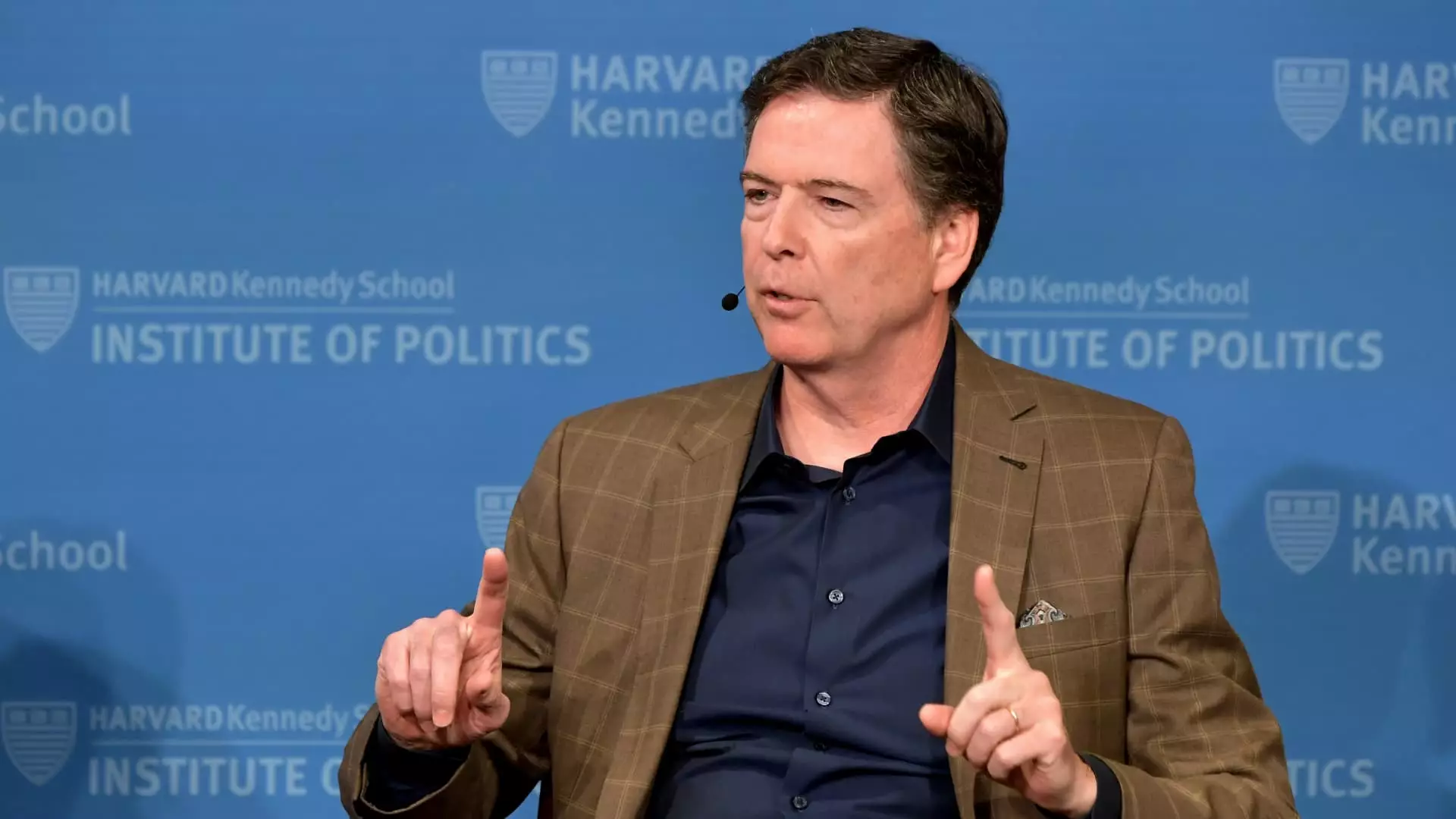In an era where social media can create or dismantle reputations in minutes, former FBI Director James Comey finds himself at the epicenter of a political storm following a now-infamous post he shared on Instagram. This unnecessary foray into the realm of symbolism led to explosive interpretations that have set several U.S. officials on high alert. While Comey’s intention may very well have been innocuous—revealing a beach’s natural ‘shell formation’ depicting the numbers “8647”—the implication of his choice of imagery awakened a hornet’s nest, with critics claiming it served as a veiled call for violence against President Donald Trump.
The rapid backlash against Comey’s post is emblematic of the hyperbolic political climate we currently inhabit. Homeland Security Secretary Kristi Noem labelled the statement as a threat against the sitting president. How did we reach a point where a personal, albeit poor, artistic expression can misfire so spectacularly? The incident forces us to scrutinize the intersection of public discourse and personal accountability, especially for individuals of prominence who occupy such pivotal roles in national security and governance.
Interpretations of Violence: A Slippery Slope
What is alarming about the aftermath of Comey’s post is less about the incident itself and more about how we react to symbolic messages in a hyper-polarized environment. Critics wasted no time accusing him of inciting violence, implying that any abstract or ambiguous message can become a proverbial grenade, tossed amidst an already volatile political arena. Statements from GOP officials like Rep. Tim Burchett were particularly aggressive, calling for Comey’s arrest and advocating for what many might call political overreach. Such reactions speak to a significant issue: the potential of language—especially in digital spaces—to invoke undue outrage and fear.
The interpretation that “8647” suggests the act of getting rid of someone is fraught with ambiguity. Could it represent a single interpretation, or is the outrage stemming from a pre-existing political animosity toward Comey himself? In politicizing the symbolism unintended or otherwise, we risk eroding the critical boundaries of dialogue in public discourse.
Responses from the Political Sphere
The reactions ignited by Comey’s post tell us more about the current political climate than they do about his intent. Donald Trump Jr.’s claim that Comey was “calling for my dad to be murdered” showcases how closely tied personal grievances are to public discourse. It reflects an escalating tendency among political figures to weaponize rhetoric for personal and ideological gain, creating a climate where sincere discourse is regularly overshadowed.
On the flip side, Comey’s defense—that he aimed to critique without invoking violence—is equally telling. He insinuates a lack of awareness towards the interpretation of his messages and brings forth an essential question: should public figures tiptoe around any ambiguous interpretation to avoid sparking outrage?
The Secret Service and DHS’s involvement signals the seriousness with which the political establishment must treat any perceived threats, but it also raises concerns about the implications of policing speech at a time when there seems to be a voracious appetite for deploring the controversial and the ambiguous.
Consequences of Hyper-Public Scrutiny
Comey’s social media misstep serves as an unnerving reminder of how today’s political climate leaves little room for error. The ramifications extend beyond Comey as a figure; they infiltrate the very fabric of our dialogue, intertwining personal expression with public accountability. Misunderstandings can lead to calls for legal and political repercussions, perpetuating an environment where caution often trumps honesty.
This situation beckons us to reflect: as vigilant citizens and critics of authority, how do we strike a balance between holding public figures, especially those with checkered pasts, accountable and allowing them room for interpretation without drastic consequences? In a media landscape perpetually broadcasting outrage, the ability to decipher intention from impact is becoming perilously thin.
In the polarizing landscape of American politics, Comey’s post serves as a fraught artifact—one that raises more questions than answers about the stability of our public discourse, the interpretations of our communications, and the thresholds we should set for acceptable forms of expression, especially when a political figure takes the stage.

